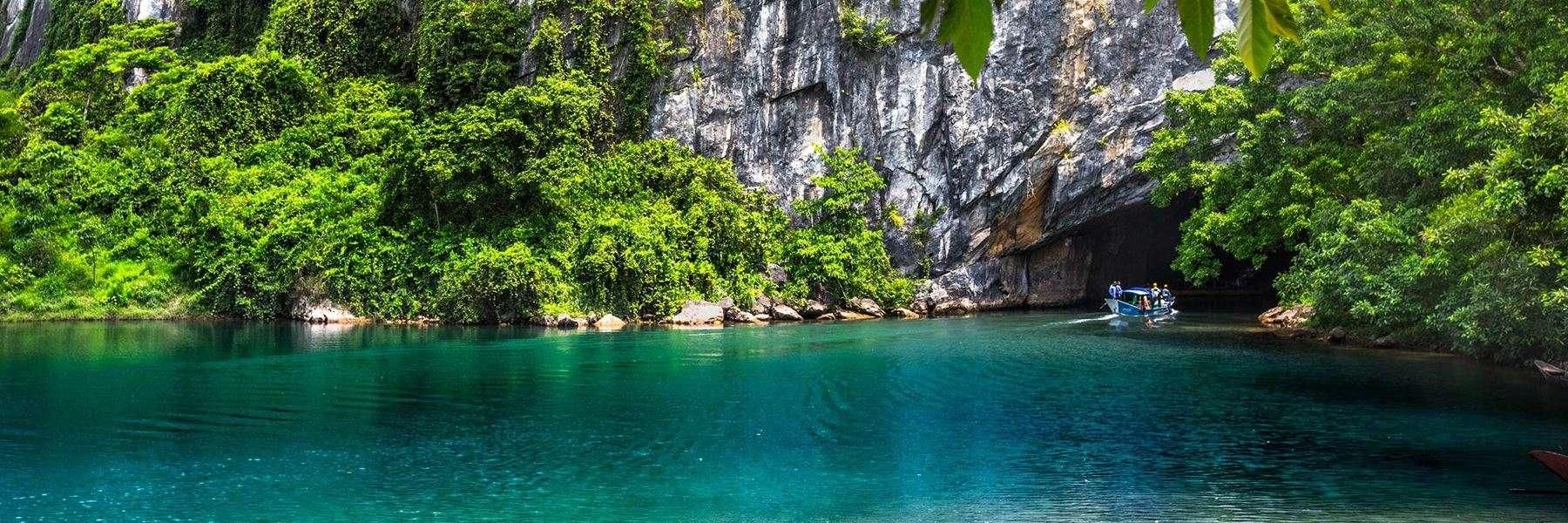Home to some of the world’s most magnificent caves, including Son Doong – the largest cave on the planet, the park offers a haven for adventure seekers and nature enthusiasts.
Location and history of Phong Nha – Ke Bang National Park
Phong Nha–Ke Bang National Park is located in Bo Trach and Minh Hoa districts in Quang Binh Province, approximately 50 kilometers northwest of Dong Hoi City. This vast area, primarily limestone, forms a significant karst landscape in Southeast Asia, connecting with Laos's Hin Namno National Protected Area.
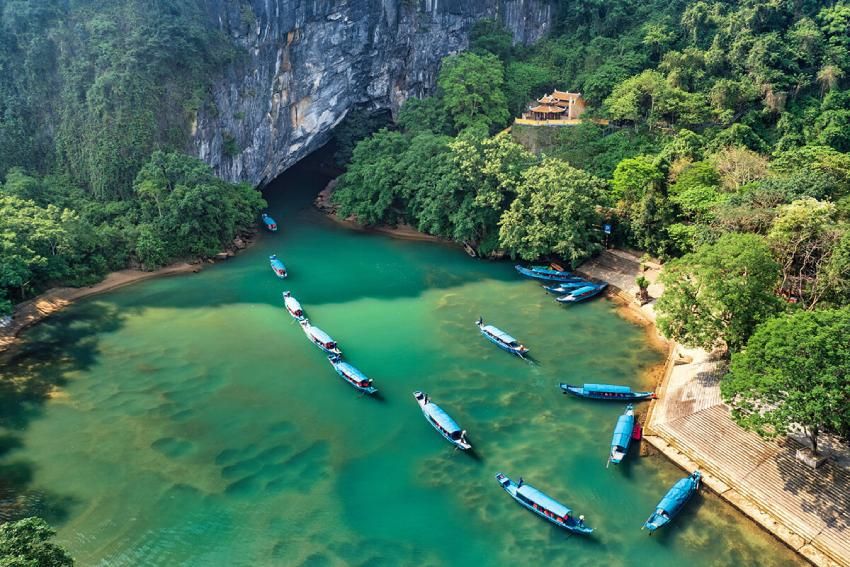
Recognized as a UNESCO World Heritage Site in 2003 for its geological significance and in 2015 for its biodiversity, the park showcases five geological development stages from the Ordovician period (464 million years ago) to the Quaternary period (present). This rich geological history is evidenced by a diverse array of fossil complexes representing different stratigraphic ages.
What is Phong Nha–Ke Bang National Park best known for?
Magnificent cave systems
Phong Nha Ke Bang, Vietnam, is renowned for its extraordinary cave system, which has over 404 mapped and measured caves totaling 220 kilometers in length. The park has three major cave systems: Phong Nha, Vom, and Mooc Spring. These cave systems hold significant geological values and are formed through long-term tectonic activities.
Some notable caves in Phong Nha–Ke Bang National Park include:
-
Phong Nha Cave: As one of the most beautiful water caves in the world, it showcases spectacular stalactites
-
Son Doong Cave: As the largest cave in the world, it features colossal stalagmites, a unique ecosystem, and a subterranean river
-
Paradise Cave: Discovered in 2005, this is a dry cave with a consistently cool temperature.
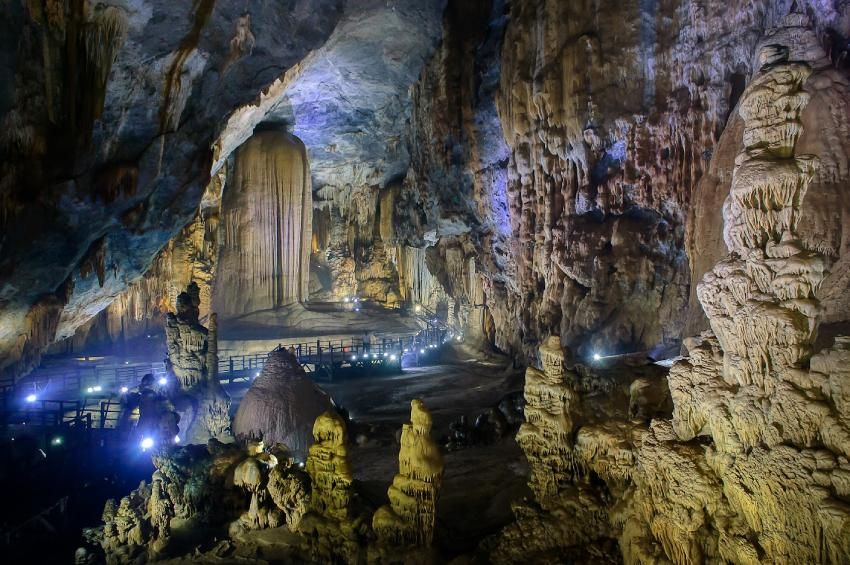
-
En Cave: The third largest cave in the world, En Cave is a part of many adventure tours due to its immense size and the unique natural formations within.
-
Ba Cave and Va Cave: These caves are part of the more challenging tours in the park, known for their pristine, less-explored interiors.
-
The Tiger Cave system: A complex network of caves that offers thrilling exploration opportunities for experienced spelunkers.
Together, these caves have made Phong Nha–Ke Bang National Park a premier destination for adventure tourism.
Animal and plant diversity
Phong Nha—Ke Bang National Park is renowned for its magnificent cave systems and rich biodiversity, hosting a wide range of rare and beautiful flora and fauna. The park is home to 1,394 animal species, including 116 listed in the IUCN Red List and 82 in the Vietnam Red Data Book. Numerous species are under urgent protection by the government and international conservation organizations. The diverse ecosystems provide ideal habitats for 10 species of primates, which make up 42% of Vietnam’s total primate species.
Additionally, the park boasts 2,953 species of higher plants, with 121 listed in the IUCN Red List and 111 in the Vietnam Red Data Book. Visitors can explore this botanical diversity by visiting the Botanical Garden, which offers an immersive experience. Other notable spots for exploring the park’s biodiversity include the Chay River, Gao Forest, Gio Waterfall, Mo Waterfall, Wildlife Rescue Center, and Mooc Spring Eco-Trail.
Amazing kayaking spots
Phong Nha – Ke Bang National Park features a complex river system, home to some of the longest underground rivers in the world. Among the major rivers are the Trooc, Chay, and Son, each with crystal-clear waters flowing through picturesque mountains and lush forests. Kayaking enthusiasts can explore the enchanting Chay River, where the calm water offers a peaceful paddling experience amidst the breathtaking scenery. Along the Chay River, you can even kayak to the entrance of Dark Cave.
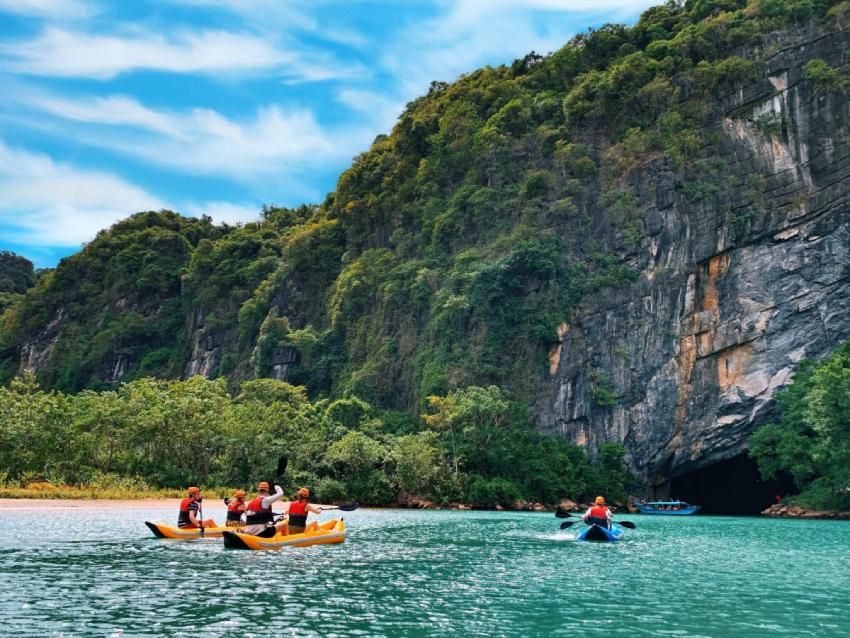
The Son River, with its gentle flow and scenic surroundings, is perfect for a leisurely kayak ride. The ride often starts near Phong Nha Cave for a unique blend of cave exploration and river paddling. Additionally, the park features numerous beautiful streams and waterfalls such as Gio Waterfall, Me Loan Waterfall, Mooc Spring, and Tra Ang Stream. These spots provide not only incredible kayaking opportunities but also a chance to immerse yourself in the tranquility of Phong Nha–Ke Bang Vietnam.
Scenic cycling and trekking routes
Phong Nha Ke Bang Vietnam offers a variety of scenic cycling and trekking routes, perfect for adventure seekers and nature lovers. A popular cycling route is the one through Bong Lai Valley, where you can spend the day exploring local villages and enjoying the serene landscape of mountains and forests. For a more challenging adventure, try exploring Tu Lan Cave, a two-day journey that includes camping near Ken Cave on the first night before venturing deeper into Tu Lan Cave on the second day. The rugged terrain here makes for a memorable challenge.
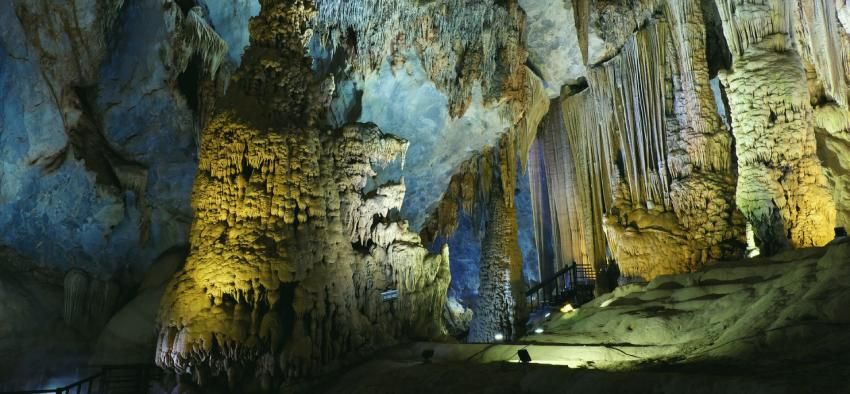
Another exciting option is camping inside En Cave, the third largest cave in the world, located next to Son Doong Cave. En Cave, with its underground river and unique ecosystem, offers a beautiful and adventurous alternative for those who may not be able to explore Son Doong Cave. For those who prefer ecotourism, a forest hiking excursion is ideal, allowing you to explore lush vegetation and visit the Wildlife Rescue Center to learn about endemic animal species.
One of the best places to go zip lining in Asia
Renowned as one of the best places for zipline in Vietnam and Asia, Phong Nha–Ke Bang National Park offers an exhilarating experience that begins with a ride over the picturesque Chay River. This adventure sets the stage for exploring the Dark Cave, where visitors will zipline into the cave’s entrance before swimming in its mystical water. As the light fades and the scenery becomes more enchanting, the journey continues through narrow, muddy passages leading to Thuy Tien Lake, which is nestled deep within the cave. After some swimming, visitors can enjoy a peaceful kayak ride back to the dock.
Phong Nha–Ke Bang National Park is a treasure trove of natural wonders, cultural heritage, and adventurous experiences that cater to all kinds of travelers. Whether you are exploring its majestic caves, engaging with the local communities, or simply soaking in the serene landscapes, this UNESCO World Heritage Site offers something truly unforgettable.



